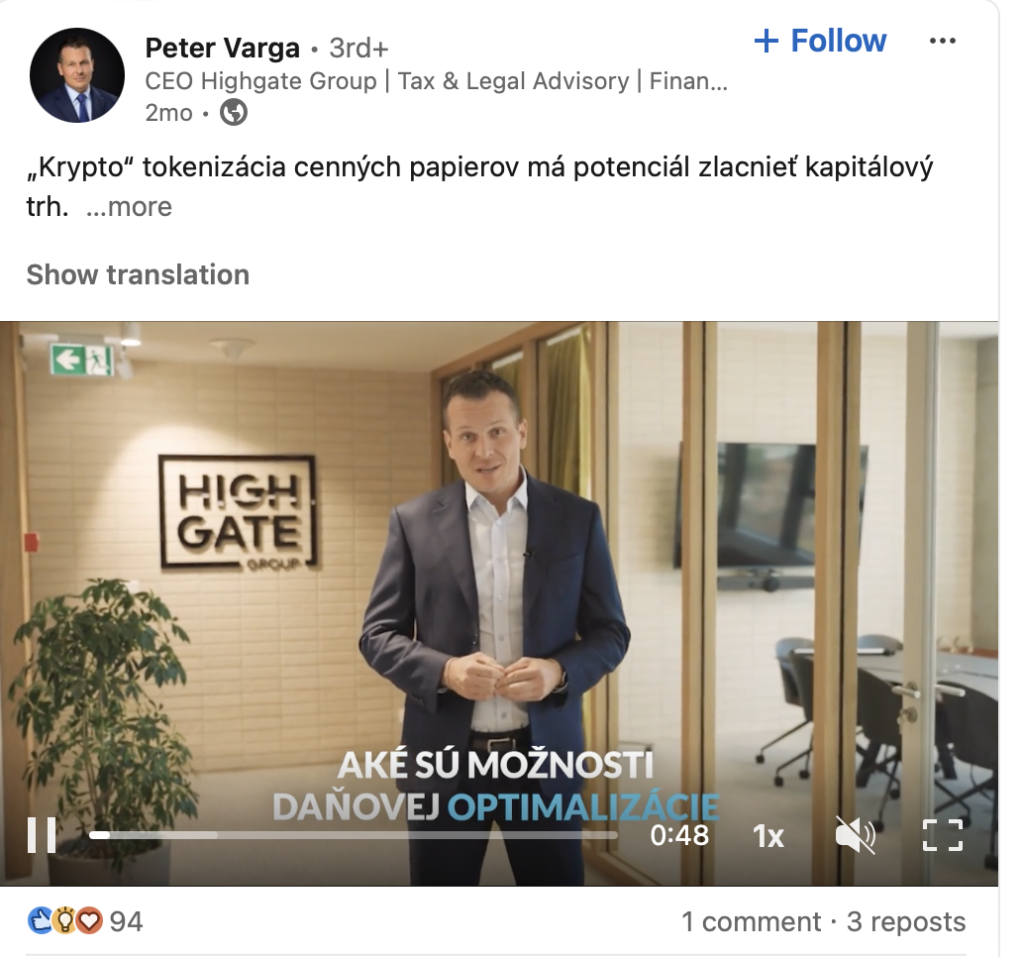

“Crypto” tokenization of securities has the potential to make the capital market cheaper. In addition to the standard supporters of cryptos, the EU also thinks so. Namely, if a Slovak issuer wants to issue securities and offer them outside SK, the process is significantly simplified thanks to the EU, but de facto prevented by the existing infrastructural fragmentation (account management, manager in the country of distribution, …). And it is these barriers that the issuance of financial instruments under the DLT is intended to break down. The legislative framework for this is partly provided by the so-called DLT Regulation. This has been in force for over a year and has the potential to, for example: 🚩 making the capital market cheaper (i) by removing some intermediaries and/or (ii) by allowing the automation of some of the simpler contractual arrangements through “smart contracts”
🚩 bring greater transparency
🚩 simplify record-keeping
🚩 enable real-time settlement, e.g. also via e-money tokens (MiCA classification). The essence of the DLT regulation is also to create a kind of parallel infrastructure in the area of “settlement” and “trading facility” to the traditional one, which is not technology neutral (e.g. such CSD regulation does not allow central depositories to register securities on DLT). However, in keeping with the adage ‘morning is wiser than evening’, the DLT Regulation, as an exception to the standard regulatory frameworks, is only a temporary regime. While on the one hand the EU recognises the potential of DLT technologies for the capital market, on the other hand it is aware of the somewhat unpredictable nature of the whole ecosystem, as a result of which it does not want to permanently change the ‘centuries’ built-up capital market legislative infrastructure in the EU even at this stage. This approach (while undoubtedly having its merits) has taken its toll. ESMA, as the EU’s authorised body, has recently reported that although 4 applications (only) have been made within the EU, no entity has yet been granted permission to operate such a parallel infrastructure. One of the reasons for this is the higher transaction costs which, coupled with the temporary nature of the regime (i.e. the unpredictability as to how it will continue afterwards), naturally reduces the demand for DLT infrastructure operation. Therefore, it is suggested that this temporary regime should be extended for a further period to make more sense for a larger group of applicants (possibly including the Central Securities Depository of the Slovak Republic, a.s.), also in view of the upfront costs. And since Slovakia has not come up with its own unilateral solution, outside the EU and DLT regulation, tokenisation of securities under SK law would not be possible at all today. And considering that we in Slovakia not only cannot build but also cannot plan the D1 and D4 interconnection, I am afraid that we will not be able to do it tomorrow either. You can learn more about this as well as about how to tax crypto in SK and abroad or about crypto regulation in investment platforms in SK and abroad (crypto funds, token issuance, …) at our conference. Besides me, there will be speakers such as Daniel Gaspar, Andrej Coplak, Juraj Forgacs and many others.
Law & Tax
Tomas Demo
tomas.demo@highgate.sk
Accounting
Peter Šopinec
peter.sopinec@highgate.sk
Crypto
Peter Varga
peter.varga@highgate.sk